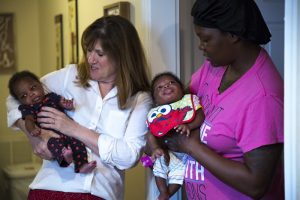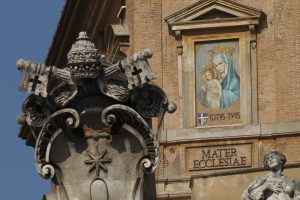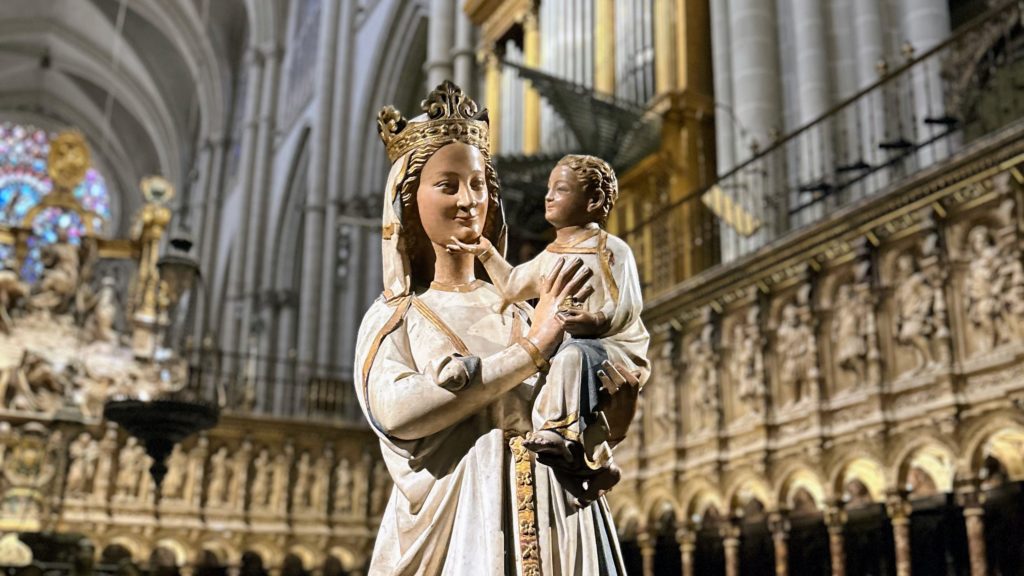A few weeks after my second son was born, I began listening to audiobooks. Determined to fight postpartum fog, I told myself that I could at least try to learn something while caring for a newborn and toddler.
I started with Abigail Tucker’s Mom Genes: Inside the New Science of Our Ancient Maternal Instinct. What could be more benign than learning about the biological, neurological, and psychological changes that just happened to me?
Benign it wasn’t. While standing over a pot of boiling water, preparing to disinfect some breast pump parts, I listened to Tucker lay out the statistics showing that children who have their maternal grandmother present and involved in their lives tend to thrive better than those who do not.
My mother died five weeks before I was disinfecting those pump parts. “I’m doomed,” I thought to myself. “My sons are doomed.” I was now, in the words of another author, a motherless daughter and a motherless mother.
The maternal grandmother makes a statistical difference largely because she has a vested interest in the health of her daughter and because she teaches her how to care for her young.
Those hands-on lessons involve everything from how to determine when to head to the ER to how to get kids to eat vegetables. A grandmother assists in modeling tender correction. She helps her daughter know when to keep kids close or when to let them roam free.
According to Tucker’s research, motherhood is ideally undertaken as a kind of apprenticeship. The art of caring for children is honed with tutelage.
Things haven’t turned out as grim as I feared. An aunt has stepped into the breach, as have several women in my parish. And I frequently draw on my memories of how my mom raised me and my brother.

Kathleen Wilson, left, of Fredericksburg, Va., helps a new mother in 2017 with one of her newborn twins March 24 at one of the homes run by Mary's Shelter, a Catholic organization that provides housing and financial support to pregnant women in crisis for up to three years after the birth of their children. Wilson, the mother of 12 biological and adopted children, said she became a founder of Mary's Shelter to help women who might otherwise see abortion as their only other option. (CNS photo/Chaz Muth)
For Catholics, the concept of learned motherhood is something to think about.
For one, mentorship is a huge area of opportunity for new moms and women religious in formation who are called to be spiritual mothers.
But our Church invites us all to think about how to better exercise maternity this time of year.
In his 1961 decree Mater et Magistra, Pope John XXIII explained that the Church “is the Mother and Teacher of all nations. Her light illumines, enkindles and enflames. No age but hears her warning voice, vibrant with heavenly wisdom. She is ever powerful to offer suitable, effective remedies for the increasing needs of men, and the sorrows and anxieties of this present life.”
A few years later in 1964, Pope Paul VI added “Mother of the Church” to the list of Mary’s titles. Six years ago, Pope Francis added this memorial to the Roman Calendar. Now, on the Monday after Pentecost, Catholics remember Mary not only as the mother of our Lord, but as our mother, to whom we were entrusted at the foot of the cross.
As an amateur theologian, I’ll leave the explaining of how Mary and the Church are both our mothers to the pros. But it stands to reason that Mary is the Mother of Mother Church.
This is where the ideas in Tucker’s book start making sense at an even deeper level: that when the members of the Church model Mary’s motherhood, they provide the most “effective remedies” for the “needs, sorrows, and anxieties” of life.
When are some key moments for the Church to model Mary’s maternal love?
The first is when her members are sick or suffering. When kids are sick, they want their mother. Our Lady stood at the foot of the Cross to offer her Son the assurance He was not alone. She who had birthed Him would be there to hold Him when He was taken down from the Cross. Likewise, she was present to the disciples in the Upper Room, comforting them in their grief and fear.
The Church extends this maternal presence to the ill and heartsick in many ways. University and hospital chaplains, parish priests administering Last Rites, lay workers who tend to migrants, refugees, or persons in war-torn areas, religious sisters caring for children and women: all of these can learn from Our Lady on how to comfort God’s people.
Children also need their mothers to shape their moral lives. Along with fathers, mothers are entrusted with instructing their children in determining right from wrong. They teach them to be truthful. As they get older, children look to their mothers to help them discern more complex moral and interpersonal matters.

The mosaic of Mary as Mother of the Church above St. Peter's Square at the Vatican. (CNS FILE PHOTO/PAUL HARING)
But a mother is also needed when a child confesses wrongdoing. Children look to see if their mother will meet them in that moment with love or anger. They want love. They want mercy. They want to know they still belong.
The Church best exercises this maternal care in the confessional. Pope Francis has said that confession should not be a “torture chamber,” but an “encounter with God’s mercy.” While the priest acts as a spiritual father, he can also model Mary’s maternal tenderness in the sacrament.
Finally, the Church shows her maternal care by helping her children strengthen their relationship with Christ, starting with baptism.
The most important thing a mother can do for her child is to have him baptized. In fact, the prayer of St. Gerard for expectant mothers ends this way: “Preserve me in the dangers of motherhood, and shield the child I now bear, that it may be brought safely to the light of day, and receive the sacrament of baptism.”
Given today’s plummeting rates of sacramental participation, what could be more important mission territory?
The Church can model Mary’s motherhood when she thoroughly prepares parents seeking baptism for their child, either in a class or a meeting with the parish priest or staff. She can help parents understand that their child’s spiritual and eternal well-being is far more important than any material gain, educational opportunity, or other temporal hope they have for their infant. And they can bring those parents more gently and securely into the fold, too.
These are but a few ways the Church can extend Marian love and maternity to her members. There are no doubt many more.
On this memorial, may we as a Church pray the words of St. Teresa of Calcutta with renewed vigor: “Mary, be a mother to me now.”

